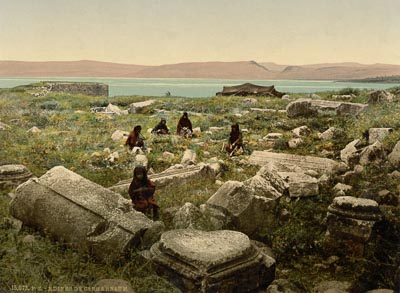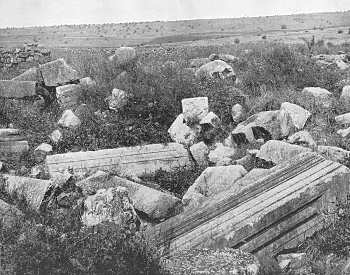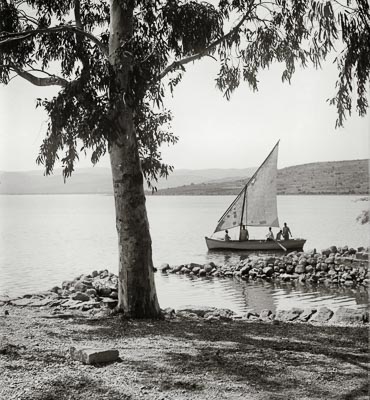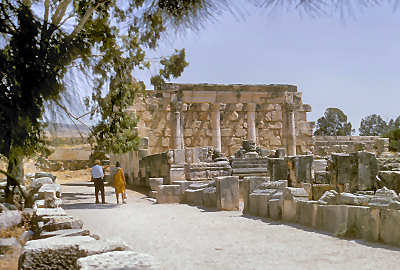
Capernaum
Ruins of the Synagogue at Capernaum

Source: The Holy Land in Photochrom
The best authority regards Tell Hum as the site of Capernaum. The view we see is of large stones which are said to have been part of the synagogue which stood in this city . . . . The place is thickly set in briars and weeds, and it is with difficulty that we manage to get our horses through the fields down to the place of the ruins. (Source: Earthly Footsteps of the Man of Galilee, p. 156.)
Landing Place at Capernaum
Capernaum lies close to the edge of the little sea, in a small plain some five miles long and a mile or two wide, which is mildly adorned with oleanders which look all the better contrasted with the bald hills and the howling deserts which surround them, but they are not as deliriously beautiful as the books paint them. If one can be calm and resolute he can look upon their comeliness and live. (Source: The Innocents Abroad by Mark Twain, p. 372.)
Ruins of the Synagogue at Capernaum

Source: Earthly Footsteps of the Man of Galilee, p. 172
The miraculous discourse recorded in the sixth chapter of John was uttered "in the synagogue as He taught in Capernaum." Was it on the site of these shapeless ruins and formidable thickets of thorn brushes and nettles that the Master uttered those wonderful words? In the picture we see a confused heap of fluted stone and broken marble. Beyond we see a wheat field. We are standing perhaps two hundred yards from the lake and are looking toward the north. Turning around we should have the Sea of Galilee in full view. (Source: Earthly Footsteps of the Man of Galilee, p. 172.)
Capernaum Synagogue
Col. Wilson by careful measurements shows that the synagogue was seventy-four feet nine inches by fifty-six feet nine inches in size, and that the walls were nearly ten feet thick. Over one lintel of the old building is what appears to be the pot of manna, and on either side of it something like a reed, which may possibly be Aaron's rod. Is there something in the difficulty we have in identifying these sacred sites which harmonizes with the spiritual mission of our Lord, who sought to break the spell of "things" and of "places" and to call our attention to the invisible and divine? Every place in Palestine seems to say to us "He is not here; He is risen." (Source: Earthly Footsteps of the Man of Galilee, p. 172.)
See Bethsaida, Sea of Galilee, Tiberias, or Fishing and Fishermen
At BiblePlaces, see Capernaum

